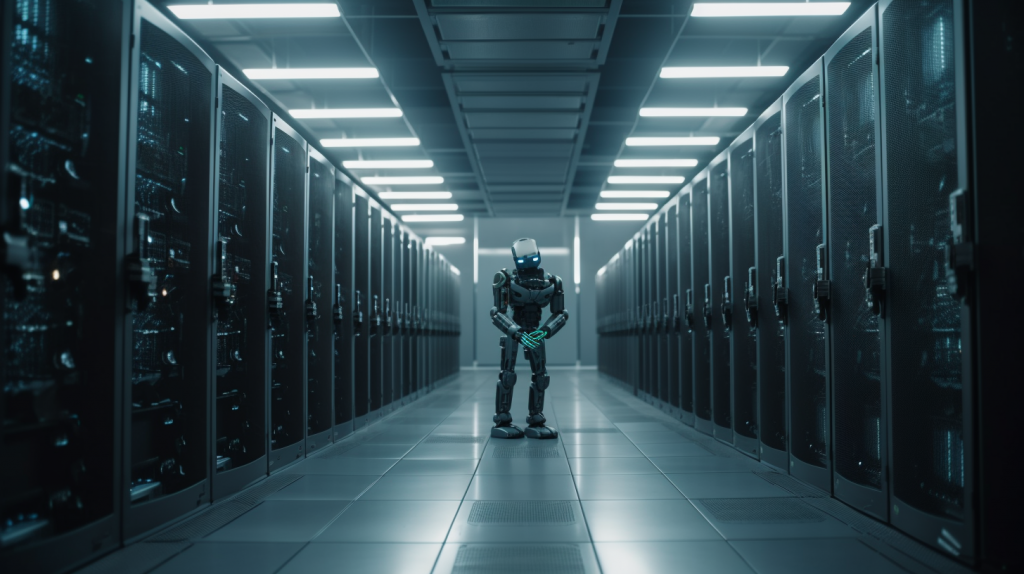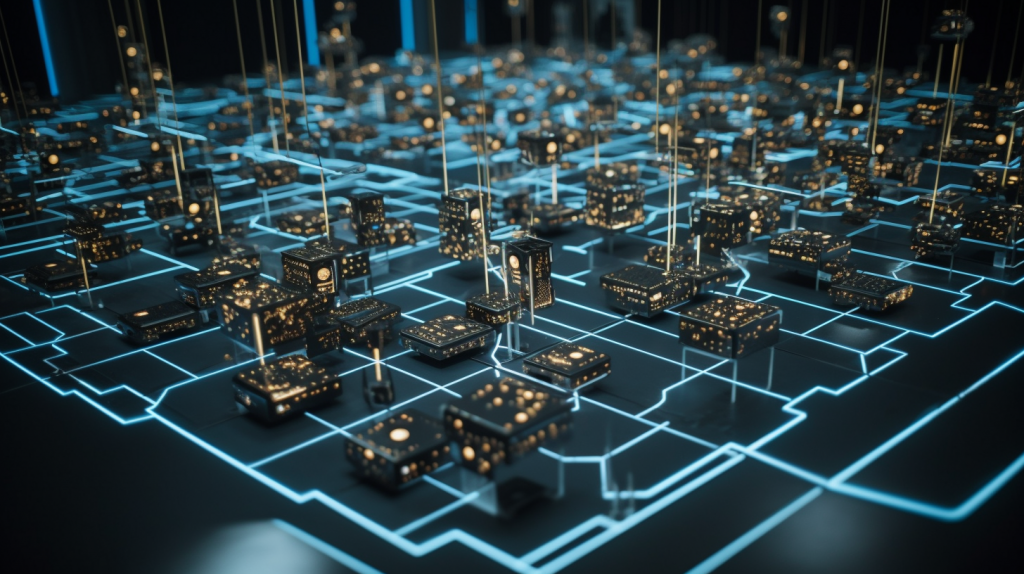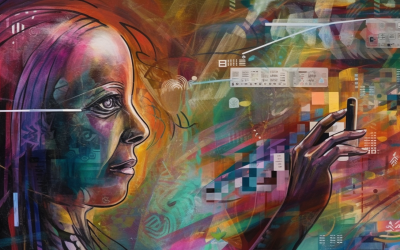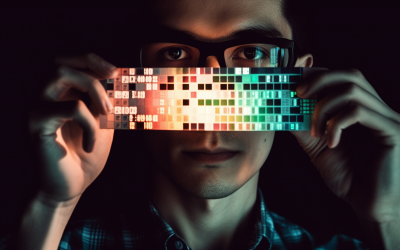In an era dominated by centralized platforms and increasing concerns over data privacy, the concept of Web3 has emerged as a potential game-changer for the digital world. As decentralized, trustless, and permissionless systems, Web3 promises to challenge the status quo and transform how we interact online. But what exactly is Web3, and how will it impact the way we live, work, and communicate?
In this complete guide, we’ll unravel the mysteries of Web3, explore its key differences from the current Web2 landscape, and discuss the potential benefits and challenges it brings. We’ll also delve into real-world examples of Web3 applications, address questions about accessibility and development, and speculate on the future of this groundbreaking paradigm shift.
Join us as we uncover the potential of Web3 and the transformative effects it could have on our society.
What is web2 and web3 in simple terms?

Web2 is the current version of the internet, which is a centralized platform where internet users access content through web browsers.
Web3, on the other hand, is a decentralized network in which web users interact directly with web pages and with each other without relying on third-party intermediaries.
What are the features of web2 and web3?
Web2 features include centralized platforms, a single server with points of failure, data stored on servers owned by companies or governments, and complete control over use of user data.
Web3 features include decentralized data networks, trustless transactions, censorship resistance, tokenization of assets (such as money, data and property), and an increased degree of user control over their own data. It also enables the use of smart contracts, which are self-executing digital agreements that automatically enforce the terms of a contract without any need for intermediaries or third parties.
What are the benefits of web3?
The main benefits of Web3 are that it provides access to a secure, decentralized network where users can transact and interact directly with each other in a trustless manner. By removing the need for centralized intermediaries to censor data further, Web3 increases user control over their data, facilitates censorship-resistant communication, and makes user-generated content more accessible than ever before.
What is the difference between Web2 and Web3?
The main difference between Web2 and Web3 is the degree of decentralization and no single point of failure. While Web2 is a centralized platform where users access content through web browsers, Web3 is distributed, meaning that users interact directly with each other without relying on a third-party governing body.
Can Web3 coexist with Web2, or will it completely replace it?
Web3 can coexist with Web2, and in many ways, it already does. While there are certain aspects of the traditional internet that will remain unchanged by the transition to Web3, it is clear that the decentralized nature of Web3 will bring about profound changes in the way we use and interact with technology.
Centralization vs. Decentralization

Web2 is a centralized platform where all the data and communication are processed and stored on servers owned by companies or governments.
Web3, on the other hand, is a decentralized network in which users interact directly with each other through peer to peer networks without relying on go-between organizations.
It doesn’t rely on centralized servers or a single point of authority.
In addition, Web3 makes use of distributed ledger technology (DLT) that helps facilitate trustless transactions, tokenization of assets, censorship resistance and enables the use of second generation of blockchain-based (Smart) agreements or contracts.
These features are not available in Web2, making it a more secure, transparent and resilient platform.
It is built on principles of decentralization.
Since it is trustless, users don’t need to rely on a third-party governing body and can interact directly with each other using cryptography. This decentralized network provides censorship resistance, privacy, data ownership, and control of digital assets.
In the end, Web3 will likely coexist with Web2, as both platforms have their own strengths and weaknesses. However, the key difference is clear the decentralized nature of Web3 will bring about a transformation in how we and businesses interact with technology.
How do Web3 technologies like blockchain and smart contracts work together to create a decentralized internet?

These blockchain-based contracts combine two key technologies that work together towards creating a more semantic web. The blockchain is the underlying technology that powers many of the features of Web3, such as trustless transactions, data immutability, and censorship resistance.
It makes the internet a more open, transparent place.
These permissionless systems allow decentralized apps or platform interaction with each other without authorization from a central authority to access or participate in the system. This makes the internet a much more open, transparent place where user data is secure and provides users more control over their own information. Additionally, it allows for more efficient management of user-generated content and eliminates the need for expensive middlemen or service providers.
It brings power back to users.
Web3 technologies put the power back in the hands of the people, allowing them to interact directly with each other without relying on external organizations. Removing centralized intermediaries provides a secure and trustless environment where users can transact and use digital assets with confidence.
Will Web3 make the Internet more accessible for people with disabilities?
Yes, Web3 can make the internet more accessible for people with disabilities. By decentralizing the way we access and interact with data, Web3 makes the world wide web a much more open environment where users have control. It also facilitates better accessibility tools, web browsers and technologies that cater to people with disabilities, such as voice recognition software or alternative input methods.
How does Web3 handle online security and protect against cyber threats?

Web3 technologies come with enhanced security features that protect users against cyber threats. By utilizing distributed ledger technology, Web3 creates an immutable and secure framework for digital asset ownership. Through the use of cryptography, it also ensures privacy and prevents data tampering, thereby providing a secure environment for user data. Additionally, smart contracts automate processes to ensure accuracy and provide additional layers of protection against malicious actors. With these measures in place, Web3 can help create a safer, more reliable mobile internet access experience.
Challenges of web3 and disadvantages
Despite the numerous benefits of Web3 for the world wide web, there are also some challenges and disadvantages associated with this paradigm shift. One key challenge lies in the scaling of any decentralized system. As Web3 relies on distributed systems like blockchain technology, maintaining efficiency and speed can be more difficult as the network grows. Additionally, the semantic learning and computational resources required for artificial intelligence and machine learning applications can be resource-intensive, potentially leading to higher costs for end users.
Another disadvantage is the learning curve for users and developers transitioning from Web2 to Web3. The decentralized structure of Web3 requires a new understanding of online data management, and decentralized applications (dApps). Furthermore, navigating the complex world of blockchain, smart contracts, crypto wallets, and decentralized protocols may be daunting for some users and businesses. This may lead to slower adoption rates, as people need time to adapt to new technologies, concepts and create apps.
Web3 adoption challenges
The adoption of Web3 faces several obstacles, some of which are related to the challenges mentioned above. The complexity of Web3 technologies can create barriers for most, especially those with limited technical knowledge. In addition, any country’s laws or clear regulations and legal frameworks surrounding a decentralized web and its core features can hinder the widespread adoption of Web 3.0 As governments and regulatory bodies work to understand and create laws surrounding decentralized systems, uncertainty may discourage some users from engaging with Web3 technologies.
Furthermore, the current dominance of Web2 social media platforms and other internet giants makes it difficult for Web3 solutions to gain traction. These centralized platforms have already established their presence in the market, and convincing users to switch to decentralized alternatives may prove to be a challenge. To overcome these adoption challenges, the Web3 community needs to focus on educating users about the benefits of decentralization, while also improving the user experience and addressing scalability and regulatory concerns.
What role will cryptocurrencies and digital applications play in the Web3 ecosystem?

Cryptocurrencies and digital assets will be key components of the Web3 ecosystem. Not only can cryptocurrencies be used to pay for services, but they can also serve as collateral in decentralized finance (DeFi) applications and provide incentives for network participation. Digital assets such as Non-Fungible Tokens (NFTs) are gaining popularity, allowing users to create and trade unique digital goods. Additionally, the rising popularity of Initial Coin Offerings (ICOs) as a form of crowdfunding makes it easier for startups and entrepreneurs to raise funds for their projects on blockchain networks. With the potential for decentralized applications to disrupt traditional businesses, cryptocurrencies will play a vital role in the Web3 ecosystem.
How to access web3
To access Web3, users typically need a Web3-compatible browser, a decentralized application (dApp), and a digital wallet. Web3-compatible browsers, such as MetaMask or Brave, allow users to interact with dApps built on decentralized networks.
A digital wallet, like Coinbase Wallet or Trust Wallet, is necessary for managing digital tokens, such as cryptocurrencies, NFTs and interacting with smart contracts. By installing these tools and connecting them to dApps, users can begin to explore and engage with a better web.
Examples of the most popular Web3 applications
Some of the most popular Web3 applications include decentralized finance (DeFi) platforms, non-fungible token (NFT) marketplaces, and decentralized social media networks. DeFi platforms, like Uniswap and Aave, enable users to trade, lend, and borrow assets without relying on traditional financial institutions. NFT marketplaces, such as OpenSea and Rarible, facilitate the creation, buying, and selling of unique digital art, nft domains and collectibles. Decentralized social networks, like Mastodon and Minds, offer censorship-resistant communication and dynamic content sharing, with users retaining control over their data.
Is Web3 the next reality of the internet?
Many experts believe that Web3 is the next reality of the Internet, as it addresses several issues associated with centralized Web2 platforms, such as data privacy, security, and monopolistic control of content delivery networks.
Web3 aims to create a more democratic, transparent, and user-centric internet, empowering individuals to control their data. As more people become aware of Web3’s potential benefits and the technology matures, it is expected to become a mainstream component of the digital landscape.
The future of Web3 and its impact on the Internet.
Web3 has the potential to significantly impact the internet by redefining digital interactions, data ownership, and the way businesses operate online. As decentralized technologies and applications gain traction, we may see a gradual shift towards a more open and semantic web, where users have greater control over to access data. This shift may disrupt traditional business models, particularly those relying on data monetization and centralized control.
Web3 could also foster new forms of collaboration and innovation, as individuals and organizations work together within decentralized ecosystems.
What’s a real-world example of how Web3 will provide greater user utility?
A real-world example of Web3 providing greater user utility is the rise of decentralized finance (DeFi) platforms. These platforms enable user interaction with financial services such as lending, borrowing, and trading without relying on traditional banks or financial intermediaries. By eliminating the need for middlemen, DeFi platforms often offer lower fees, increased accessibility, and more transparent processes, making financial and payment services more inclusive and efficient.
How will the legal and regulatory landscape change with the widespread adoption of Web3?
As Web3 gains traction, the legal and regulatory landscape will need to adapt to address the unique challenges posed by decentralized technologies. Lawmakers and regulators will need to develop new frameworks that protect users, prevent fraud, and maintain market stability while also promoting innovation and growth.
This may involve updating existing laws, creating new regulations, or establishing specialized regulatory bodies to oversee the decentralized internet and semantic web.
How can I invest in Web3?
Investing in Web3 can involve various approaches, such as purchasing cryptocurrencies associated with Web3 projects, participating in initial coin offerings (ICOs) or token sales, or directly investing in companies developing Web3 technologies. It is essential to thoroughly research each investment opportunity, understand the risks associated with speculative markets such as this, and consider seeking professional advice before making any investment decisions.
The Web3 revolution is just beginning, and the technology has the potential to significantly transform the way we interact with each other and access services online. As more people become aware of Web3’s potential benefits, it is expected to gain traction in both the public and private sectors, disrupting traditional business models and ushering in a new era of digital interaction. By investing in Web3 and understanding its implications, you can take advantage of the opportunities it creates.
The potential of Web3 is immense, and with the right approach, it can lead to a more interconnected, secure, and inclusive digital landscape. It is important to remain informed about developments in this space so that you can stay on top of emerging trends and capitalize on the opportunities presented by Web3.
With ongoing collaboration and social connectivity between developers, users, businesses, and regulators, Web3 has the potential to revolutionize the Internet as we know it.
How to get started with Web3 development.
If you’re interested in exploring Web3 development, there are several steps to consider. First, it is important to gain a basic understanding of Web3 technology and its associated concepts. You may also find it beneficial to join a Web3-focused community or forum to exchange ideas with other developers and ask questions. Additionally, you should become familiar with the development tools and frameworks available, such as Ethereum and Solidity.
Finally, consider attending Web3-related events or conferences to learn more about the technology and network with other developers. Ultimately, developing skills in this area will require dedication and hard work – but it could open up a range of exciting opportunities in the future. With the right knowledge and resources, you can gain exponential growth and become a leader in this burgeoning field.
What is the learning curve for someone new to Web3, and how can they familiarize themselves with its concepts?
The learning curve for someone new to Web3 can vary depending on their level of technical experience and background knowledge. For those with some programming experience, the concepts of blockchain technology, may not be completely unfamiliar. However, there is still a lot to learn in order to become proficient in developing applications using these technologies.
Fortunately, there are many resources available to learn more about Web3 and its concepts.
Beginners may find it helpful to start with online courses or tutorials covering the basics of blockchain technology and decentralized networks. Books, webinars, conferences, and virtual summits can also provide valuable insights into the world of Web3 development. Additionally, joining online forums or communities is a great way to stay up-to-date with the latest developments and ask questions. With patience and dedication, anyone can become comfortable working with Web3 technologies. Good luck!
“So, what do you think? Is Web3 the future of the internet? Or is it just another fad? Stay tuned for my next article, where I’ll explore the potential of Web3 and discuss some of the challenges that it faces.”





Exciting and scary at the same time….good info